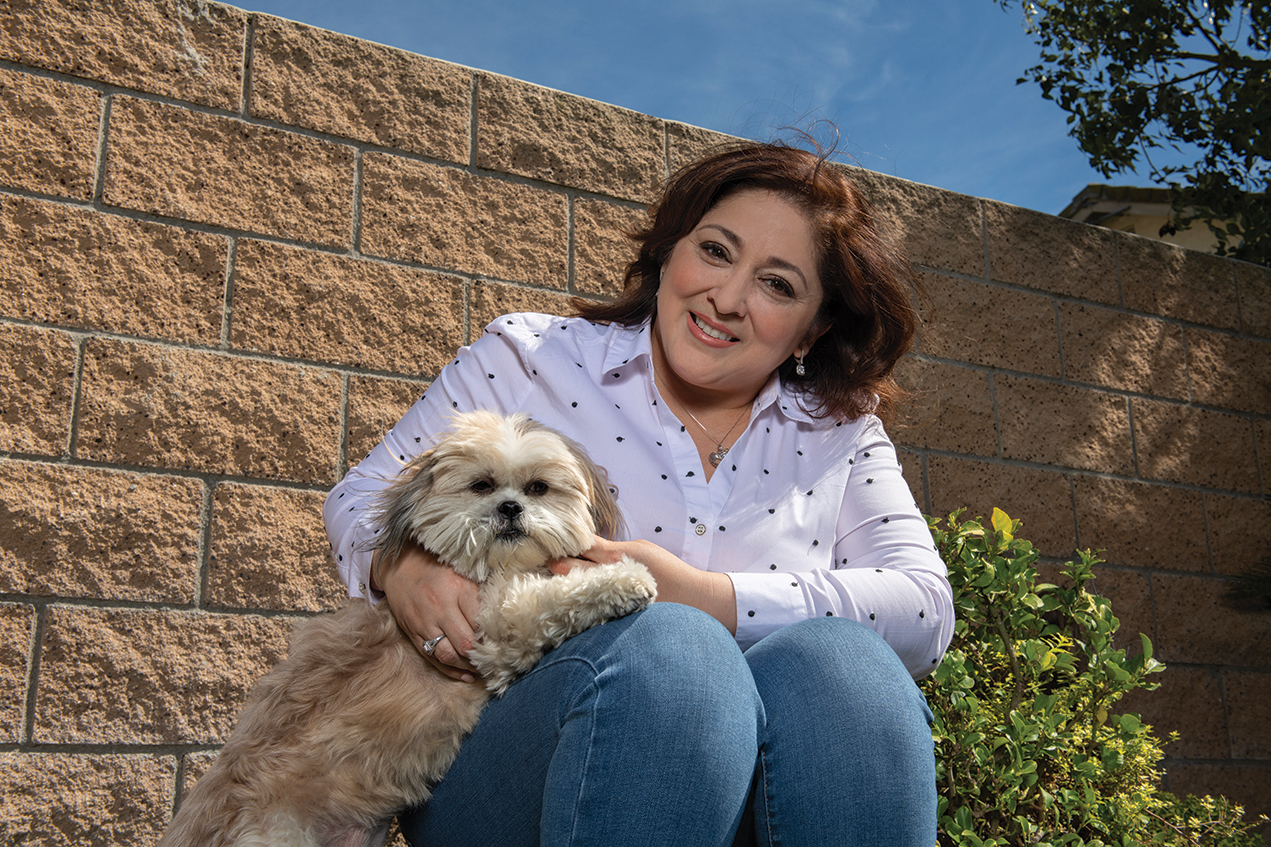During her last pregnancy, an ultrasound at a community health care facility in Irvine revealed that Araceli Serrano had a cyst in her uterus that was so large, the images looked like she was going to give birth to twins. Because of the cyst, she had to have a Cesarean section, after which her doctor suggested that she should have a partial hysterectomy.
She had the hysterectomy in 2015, which solved the problem of the cyst in her uterus, but seemingly created another medical problem: incontinence. “What I was told was that I no longer had the uterus to hold on to the urethra and that was causing incontinence,” Serrano said.
Urinary incontinence is one of the most common pelvic floor disorders, which occur when the ligaments, connective tissues and muscles in the pelvis are stretched, damaged or weakened, shifting away from their natural alignment. This can lead to problems affecting the vagina, uterus, bladder, intestines or rectum.
Though both men and women suffer from pelvic floor disorders, they disproportionately affect women. About one-third of women in the United States have a pelvic floor disorder and almost one-fourth have one or more.
Many factors contribute to pelvic floor disorders — childbirth, hysterectomy, menopause, diabetes and injuries to the pelvic region all can play a part. People with neurologic diseases such as multiple sclerosis, stroke, Parkinson’s disease and spina bifida also may have pelvic floor disorders.
Serrano tried taking a prescription medication to deal with her incontinence, but it was far from a fix. Her everyday life still was filled with concerns over her proximity to a restroom. If she went out to eat, she had to know where the restrooms were before she sat down in case she needed to get there urgently. In order to go to a concert or a sporting event, she would typically forgo liquid for some time before and had to avoid drinking until the event was over.
After three years on the medication and never fully recovering her quality of life, Serrano was referred to David Ginsberg, MD, professor of clinical urology at the Keck School of Medicine of USC, whose practice focuses on female pelvic medicine and reconstructive surgery. Ginsberg, whose present research interests focus on urinary incontinence, lower urinary tract reconstruction in spinal cord injury patients and urologic applications of botulinum toxin, evaluated Serrano’s incontinence with a urodynamic test, an evaluation that reveals how well the bladder is functioning and which type of incontinence a patient is experiencing.
“If we don’t know whether the patient has stress or urge incontinence, urodynamics can help guide us to the appropriate therapy,” Ginsberg said.
Stress incontinence is triggered by movement and acts such as coughing or sneezing, and typically requires surgery. Urge incontinence, which is associated with an overactive bladder, creates problems with both urgency and frequency and is initially treated with behavioral therapy or oral medication. Serrano’s evaluation showed that she had both types of incontinence, though her primary issue was stress incontinence.
Ginsberg notes that not all patients with incontinence need surgical intervention. Patients with mild incontinence may benefit from prescribed pelvic floor exercises or lifestyle changes. Others can do extremely well with oral medications. But if less invasive options are not effective, surgery can help those, like Serrano, who need a higher level of treatment. In her case, Ginsberg recommended she have a surgery called a sling procedure to deal with her stress incontinence.
This minimally invasive procedure, which is done via a vaginal approach, is finished in less than an hour and the patient is able to go home the day of surgery.
Since the procedure was short and involved only making two very small incisions, Serrano soon was able to get back to work and sit comfortably at her desk. Once she did return to work, one of the first things she noticed was that she really was sitting at her desk most of the day instead of constantly running down the hall to the restroom.
“It has been freeing to be able to relax and not have to worry where the facilities are all the time,” she said.
To learn more or schedule an appointment, call (800) USC-CARE or visit KeckMedicine.org/fprm.
— Hope Hamashige


